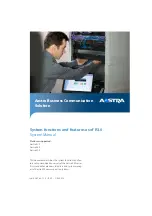
158004.B00
G3
2
This step may be required for some cards. Some Compact Flash cards do
not report their parameters and so the parameters will need to be set
manually for these devices. For Compact Flash cards that do not seem to
be working properly when you use the Auto Detect option, do the following. In
the Main / Primary Master menu set the "type" to "User". Then set the Multi-
sector Transfer to Disabled, the LBA to Disabled, 32-Bit I/O to Disabled and
Transfer Mode to Standard. These settings may be unnecessarily
conservative for some Compact Flash cards, but others do not work in the
faster modes. If necessary set the other disk parameters (number of heads,
cylinders and sectors per track) to the actual number of the drive.
3
Save the settings and exit. The TP400 will re-boot automatically.
The Compact Flash card is now ready for use.
G.5
USING COMPACT FLASH CARDS
Unlike mechanical IDE drives the Compact Flash cards do not require DOS
formatting before use. Simply follow the setup instructions detailed above and then
use the Compact Flash card straight away.
G.5.1 Hot
Plugging
Although the Compact Flash standard allows for Compact Flash modules to be
installed and removed while the host computer is powered on, this must not be done
with the TP400, since the TP400 BIOS and operating systems assume that a hard
disk drive is present permanently. Removing or changing a Compact Flash card while
the TP400 is powered on may confuse software and corrupt data on the disks.
G.5.2 Formatting and Making the Card Bootable
The Compact Flash cards come ready-formatted with the DOS FAT file format. It is
therefore not necessary to run either the MS-DOS FDISK or FORMAT programs.
DOS can be installed onto the Compact Flash card in the normal way using the DOS
installation disks. Alternatively, if the Compact Flash card needs to boot DOS but
does not require all of the DOS support files, you can use the DOS SYS command to
transfer the system files to the Compact Flash card. The use of this command is
detailed in the MS-DOS user’s manual. Alternatively type: SYS HELP at the DOS
prompt for command usage.
G.5.3 Configuring the CF100 as a slave drive
The CF100 is configured as the Master IDE as standard. This can be changed to the
Slave IDE drive through solder link area LK1 on the CF100.
Making the CF100 a Slave will allow another IDE drive to be configured as the Master
IDE drive and hence the boot disk. Please note that you cannot have the CF100 set
to Slave if there is no Master drive present.
Link area LK1 is set as follows:
Содержание 104-plus
Страница 2: ... This page is intentionally left blank ...
Страница 4: ... This page is intentionally left blank ...
Страница 76: ...66 158004 B00 This page is intentionally left blank ...
Страница 86: ...B8 158004 B00 This page is intentionally left blank ...
Страница 88: ...C2 158004 B00 FIGURE C1 MAIN BOARD TOP COMPONENT PLACEMENT ...
Страница 89: ...158004 B00 C3 FIGURE C2 MAIN BOARD BOTTOM COMPONENT PLACEMENT ...
Страница 90: ...C4 158004 B00 FIGURE C3 DAUGHTER BOARD TOP COMPONENT PLACEMENT ...
Страница 91: ...158004 B00 C5 FIGURE C4 DAUGHTER BOARD BOTTOM COMPONENT PLACEMENT ...
Страница 92: ...C6 158004 B00 FIGURE C5 MAIN BOARD MECHANICAL DIMENSIONS ...
Страница 93: ...158004 B00 C7 FIGURE C6 DAUGHTER BOARD MECHANICAL DIMENSIONS ...
Страница 94: ...C8 158004 B00 This page is intentionally left blank ...
Страница 100: ...D6 158004 B00 This page is intentionally left blank ...
Страница 116: ...E16 158004 B00 This page is intentionally left blank ...
Страница 134: ...H6 164004 C03 This page is Intentionally left blank ...
Страница 136: ...J2 164004 C03 FIGURE J1 TP400ET MECHANICAL DRAWINGS FIGURE J2 TP400ET CIRCUIT DIAGRAM ...
Страница 138: ...K2 158004 B00 FIGURE K1 TP300USB MECHANICAL DRAWINGS FIGURE K2 TP300USB CIRCUIT DIAGRAM ...














































